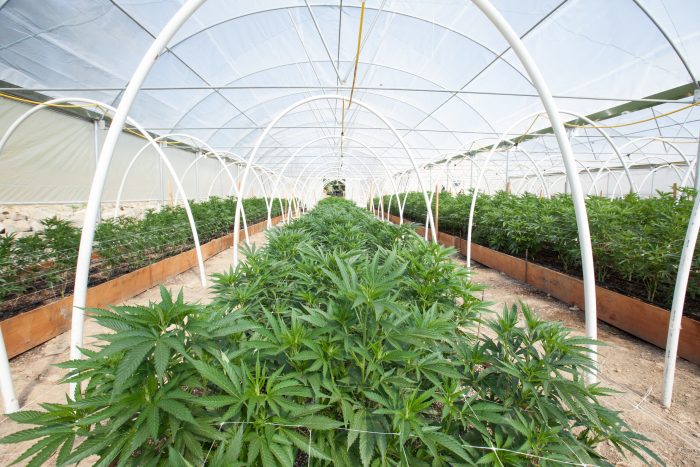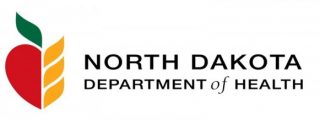The Official Government Seed-to-Sale Traceability Provider for North Dakota
Cannabis License Info
Information will be updated here as it becomes available. Check back for updates! Please note; while we aim to keep this pages fully up to date with the latest information, cannabis laws are always changing. We encourage you to verify these rules and regulations in the official legal text, which we’ve linked throughout the page for your convenience.
North Dakota Seed-to-Sale Traceability Info
North Dakota’s Medical Marijuana Program will be operated by the state’s Department of Health.
You can see the full set of rules and regulations within the Compassionate Care Act here.
BioTrack software solutions impact the following regulations, to review the rules and regulations in their entirety, please click here.
33-44-01-08. Compassion center inventory limits.
- Except as otherwise provided by this section, a manufacturing facility shall not possess more than one thousand plants, regardless of the stage of growth. A manufacturing facility may possess an additional fifty plants for the exclusive purpose of department-authorized research and development related to production and processing. Plants for research and development shall:
- Be included in inventory;
- Be located in a restricted area separate from the restricted area containing plants used for producing and processing of usable marijuana; and
- Not be used in the production and processing of usable marijuana that is sold to a dispensary for patient consumption.
- A dispensary shall not possess more than three thousand five hundred ounces (99.22 kilograms) of usable marijuana at any time, regardless of formulation.
33-44-01-16. Recall procedures.
Each compassion center must establish a procedure for issuing voluntary and mandatory recalls for usable marijuana.
- Factors that require a recall include:
- Defective or potentially defective usable marijuana.
- Usable marijuana that has failed laboratory testing in accordance with these rules.
- Reasonable probability that use of the usable marijuana or exposure to the usable marijuana will cause serious adverse health consequences.
- Any other instances as determined by the department that would warrant a recall.
- The procedure must include:
- The compassion center agents who are responsible for overseeing the recall.
- The procedures for notifying everyone affected by a recall including registered qualifying patients, registered designated caregivers, and other compassion centers.
- Instructions for registered qualifying patients, registered designated caregivers, and other compassion centers, regarding proper product handling of any recalled usable marijuana.
- A dispensary shall maintain a list of registered qualifying patients and registered designated caregivers and current contact information to provide notice in the event of a recall.
33-44-01-19. Inventory control measures.
- The department shall maintain a computer information system(s) for inventory control and registry identification card verification.
- A compassion center inventory control system shall interface with the computer information system maintained by the department. All costs associated with interfacing are the responsibility of the compassion center. If the compassion center’s inventory control system does not adequately, as determined by the department, interface with the computer information system maintained by the department, the department may require the compassion center to use the system maintained by the department.
33-44-01-20. Conducting inventory.
- Each compassion center, prior to commencing business, shall:
- Conduct an initial inventory of all marijuana and usable marijuana at the compassion center. If a compassion center commences business with no marijuana or usable marijuana, the compassion center shall record the initial inventory as zero.
- After the initial inventory, a compassion center shall conduct an inventory of marijuana and usable marijuana once a week for a period of at least six months, and upon department approval, at least monthly thereafter.
- Conduct each inventory in a manner that includes two individuals. One of the two individuals may not be involved in the production and processing of marijuana, the dispensing of usable marijuana, or the preparation of the compassion center financial records. One of the two individuals shall be a supervisor or manager.
- Inventory documentation must include:
- The date of the inventory;
- Detailed inventory results; and
- The name, signature, and title of the individuals who conducted the inventory and an attestation by both individuals as to the accuracy of the inventory.
33-44-01-26. Manufacturing facility labeling.
- A manufacturing facility shall label all usable marijuana in accordance with the following before their sale or transfer to a dispensary:
- A container holding dried leaves and flowers shall include the following information:
(1) Manufacturers’ business or trade name and registry certification number;
(2) Container unique identification number;
(3) Harvest lot number;
(4) Date of harvest;
(5) Name of strain;
(6) Net weight in U.S. customary and metric units;
(7) Concentration of tetrahydrocannabinol, tetrahydrocannabinolic acid, and cannabidiol;
(8) Activation time expressed in w
(9) Activation time, expressed in words or through a pictogram;
(10) Expiration date;
(11) Universal symbol and,
(12) Pediatric symbol, if applicable;
(13) A consumer warnings that state:
(a) “This product is not approved by the FDA to treat, cure, or prevent any disease.”
(b) “For use by North Dakota registered qualifying patients only.”
(c) “Keep out of reach of children.”
(d) “It is illegal to drive or to be in actual physical control of a motor vehicle while under the influence of marijuana.”
- A container holding a medical cannabinoid product shall include the following information:
- (1) Manufacturers’ business or trade name and registry certification number;
- (2) Container unique identification number;
- (3) Process lot number;
- (4) Product identity;
- (5) Date the product was made;
- (6) Net weight or volume in U.S. customary and metric units;
- (7) Serving size and number of servings per container;
- (8) Concentration or amount of tetrahydrocannabinol, and the concentration or amount of cannabidiol, by weight or volume in each serving and in each container;
- (9) List of ingredients in descending order or predominance by weight or volume used to process the medical cannabinoid product;
- (10) Activation time, expressed in words or through a pictogram;
- (11) Expiration date;
- (12) Universal symbol;
- (13) Pediatric symbol, if applicable;
- (14) Consumer warnings that state:
(a) “This product is not approved by the FDA to treat, cure, or prevent any disease.”
(b) “For use by North Dakota registered qualifying patients only.”
(c) “Keep out of reach of children.”
(d) “It is illegal to drive or to be in actual physical control of a motor vehicle while under the influence of marijuana.”
- Usable marijuana labels required in accordance with this section shall be no smaller than eight point, Arial or Calibri, font. If, due to the size of the container, sufficient space does not exist for a label containing all of the required information, the manufacturing facility may:
- Use a peel-back or accordion label if, the peel-back or accordion label is easily identified as containing the required information; or
- Reduce the size of the required information to six point font.
33-44-01-27. Dispensary labeling.
- All usable marijuana delivered to a dispensary from a manufacturing facility shall meet the labeling requirements in section 33-44-01-26.
- A dispensary shall affix a label to all usable marijuana distributed to registered qualifying patients and registered designated caregivers that includes:
- The registered qualifying patient’s name and department issued registry identification card number.
- The registered designated caregiver’s name and department issued registry identification card number, if applicable.
- The name of the dispensary.
- Date dispensed.
- Usable marijuana labels required in accordance with this section shall be no smaller than eight-point, Arial or Calibri, font. If, due to the size of the container, sufficient space does not exist for a label containing all of the required information, the dispensary may:
- Use a peel-back or accordion label if, the peel-back or accordion label is easily identified as containing the required information; or
- Reduce the size of the required information to six-point font.
33-44-01-30. Transportation requirements.
- Any compassion center or laboratory transporting marijuana, usable marijuana, or medical marijuana waste must use a manifest system, approved by the department, to track transportation. The manifest must be in a vehicle transporting marijuana, usable marijuana, or medical marijuana waste. The manifest must be provided to law enforcement upon request.
- The manifest system must include a chain of custody that records:
(1) The name and address of the destination.
(2) The description of each individual container that is part of the shipment and the total number of individual containers.
(3) The date and time the shipment is placed into the transport vehicle.
(4) The date and time the shipment is accepted at the delivery destination.
(5) The person’s identity, and the circumstances, duration, and disposition of any other person who had custody or control of the shipment.
(6) Any handling or storage instructions.
- Before transporting marijuana, usable marijuana, or medical marijuana waste, a compassion center or laboratory must:
(1) Complete a manifest on a form approved by the department.
(2) Transmit a copy of the manifest to the receiving entity or individual.
- The manifest must be signed by:
(1) A compassion center agent or laboratory agent upon departure.
(2) A compassion center agent, laboratory agent, an employee of a waste facility, registered qualifying patient, or registered designated caregiver upon its receipt.
- A compassion center agent or laboratory agent receiving marijuana or usable marijuana must:
(1) Verify and document the type and quantity of the transported marijuana, usable marijuana, or medical marijuana waste, against the manifest.
(2) Return a copy of the signed manifest to the originating entity upon completion.
- A compassion center must also record the marijuana or usable marijuana that is received as inventory in accordance with section 33-44-01-20.
- A compassion center or laboratory must maintain all manifests for at least seven years and make them available upon request by the department.
- A compassion center or laboratory must ensure that marijuana, usable marijuana, or medical marijuana waste, except for medical marijuana waste which has been rendered unusable in accordance with 33-44-01-15, is transported as follows:
- Packaged in tamper-evident containers.
- Transported so it is not visible or recognizable from outside the vehicle.
- Transported in a vehicle that does not bear any markings to indicate that the vehicle contains marijuana, usable marijuana, or medical marijuana waste, or bear the name or logo of the compassion center or laboratory.
- Transported in an enclosed, locked storage compartment that is secured, or affixed, to the vehicle.
- Compassion center agents or laboratory agents who are transporting marijuana, usable marijuana, or medical marijuana waste must:
- Travel directly to the designation specified on the manifest.
- Document on the manifest refueling and all other stops during transit, including:
(1) The reason for the stop;
(2) The duration of the stop;
(3) The location of the stop; and
(4) All activities of compassion center agents or laboratory agents exiting the vehicle.
- If an emergency requires stopping the vehicle, the compassion center agent or laboratory agent must contact 911.
- Under no circumstances may any person other than the designated compassion center agent or laboratory agent have physical control of the motor vehicle that is transporting the marijuana, usable marijuana, or medical marijuana waste.
- A compassion center must staff all motor vehicles with a minimum of two compassion center agents when transporting usable marijuana between compassion centers. At least one agent must remain with the motor vehicle at all times when the motor vehicle contains usable marijuana.
- A single compassion center agent may transport medical marijuana waste between compassion centers or to a waste facility. A single dispensary agent may transport usable marijuana to a registered qualifying patient or registered designated caregiver. A single laboratory agent may transport marijuana, usable marijuana, or medical marijuana waste to its laboratory, to a manufacturing facility, or to a waste facility.
- Each compassion center agent or laboratory agent in a transport motor vehicle must have communication access with the compassion center or laboratory and have the ability to contact law enforcement through the 911 emergency system.
- A compassion center agent or laboratory agent must carry their registry identification card at all times when transporting marijuana, usable marijuana, or medical marijuana waste.
- A compassion center agent or laboratory agent shall not leave a vehicle that is transporting marijuana, usable marijuana, or medical marijuana waste unattended overnight.
33-44-01-31. Compassion center inspections and compliance.
The department, or a department designee, shall conduct inspections of compassion centers to ensure compliance with North Dakota Century Code chapter 19-24.1 and these rules. Compassion centers shall receive the results of an inspection in writing. Issues of noncompliance and concerns about the continued operation of the compassion may result in a plan of correction, suspension, or revocation of a registry identification card or registration certificate.
33-44-01-33. Data reporting.
Data related to usable marijuana dispensed for registered qualifying patient use shall be submitted to the North Dakota prescription drug monitoring program. The department will submit the data to the prescription drug monitoring program.
33-44-01-40. Usable marijuana testing.
- A manufacturing facility must have all usable marijuana tested in accordance with sections 33-44-01-42, 33-44-01-43, and 33-44-01-44 by a laboratory selected by the department as described in section 33-44-01-36. The manufacturing facility shall pay all costs of testing usable marijuana in accordance with these rules.
- A manufacturing facility may not transfer usable marijuana to a dispensary until it is tested and passes compliance testing in accordance with these rules.
- A dispensary may not accept usable marijuana from a manufacturing facility unless it is tested and passes compliance testing in accordance with these rules.
33-44-01-41. Ordering tests.
- A manufacturing facility must provide a laboratory with the following information, at a minimum, prior to the laboratory taking samples:
- The name, address, and contact information of the manufacturing facility;
- Type of usable marijuana;
- Batch numbers to be tested;
- Harvest lot number or numbers associated with the batch numbers;
- Process lot number associated with the batch numbers, if applicable;
- Total mass or volume of each batch to be tested;
- For medical cannabinoid products, the unit of sale;
- Concentration information, if known; and
- Identification of the test or tests the manufacturing facility is requesting the laboratory to conduct.
- It is the responsibility of the manufacturing facility to order the tests necessary to comply with North Dakota Century Code chapter 19-24.1 and these rules.
33-44-01-42. Compliance testing requirements for dried leaves and flowers.
- A manufacturing facility must have every batch from a harvest lot of dried leaves and flowers tested for pesticides and degradation compounds in accordance with section 33-44-01-47.
- In addition to testing required in subsection 1 of this section, a manufacturing facility must have every batch from a harvest lot of dried leaves and flowers, to be packaged in a container for transfer to a dispensary, tested for the following:
- Microbiological contaminants and mycotoxins in accordance with section 33-44-01-48.
- Water activity and moisture content in accordance with section 33-44-01-
- Concentration in accordance with section 33-44-01-51.
33-44-01-43. Compliance testing requirements for cannabinoid concentrates.
- A manufacturing facility must have every process lot of cannabinoid concentrate, to be packaged in a container for transfer to a dispensary, tested for the following:
- Pesticides and degradation compounds in accordance with section 33-44-01-47.
- Microbiological contaminants and mycotoxins in accordance with section 33-44-01-48.
- Solvents in accordance with section 33-44-01-49.
- Concentration in accordance with section 33-44-01-51.
- A manufacturing facility must have every process lot of cannabinoid concentrate intended for use in processing a medical cannabinoid product tested for:
- Pesticides and degradation compounds in accordance with section 33-44-01-47.
- Microbiological contaminants and mycotoxins in accordance with section 33-44-01-48.
- Solvents in accordance with section 33-44-01-49.
- A cannabinoid concentrate shall not be used in processing a medical cannabinoid product unless the requirements of testing in subsection 2 of this section have been met.
- A manufacturing facility is exempt from testing for solvents under this section if the manufacturing facility did not use any solvent.
33-44-01-44. Compliance testing requirements for medical cannabinoid products.
A manufacturing facility must have every process lot of a medical cannabinoid product, to be packaged in a container for transfer to a dispensary, tested for the following:
- Microbiological contaminants and mycotoxins in accordance with section 33-44-01-48.
- Concentration in accordance with section 33-44-01-51.
33-44-01-45. Batch requirements for compliance testing.
- For compliance testing of dried leaves and flowers, a manufacturing facility must separate each harvest lot into no larger than 10 pound batches.
- For compliance testing of cannabinoid concentrates, a process lot is considered a batch.
- For compliance testing of medical cannabinoid products, a manufacturing facility must separate process lots into not larger than 5,000 unit of sale batches.
- A manufacturing facility must assign each batch a unique batch number and that unique batch number must be:
- Documented and maintained in the manufacturing facilities records, including the compassion center’s inventory control system;
- Provided to the laboratory agent responsible for taking samples; and
- Included on the batch label as required in section 33-44-01-46.
- A manufacturing facility may not reuse a unique batch number.
33-44-01-46. Manufacturing facility requirements for labeling, storing, and securing usable marijuana batches.
When samples are taken from a harvest or process lot batch, a manufacturing facility must:
- Ensure the batch is labeled with the following information:
- The manufacturing facility’s name;
- The harvest lot or process lot unique identification number;
- The name of the laboratory that took samples;
- The unique identification numbers provided by the laboratory agents; and
- The date the samples were taken.
- Store and secure the batch in a manner that prevents the product from being tampered with or transferred prior to required tests being completed.
- Be able to easily locate a batch stored and secured under subsection 2 of this section and provide that location to the department or a laboratory upon request.







